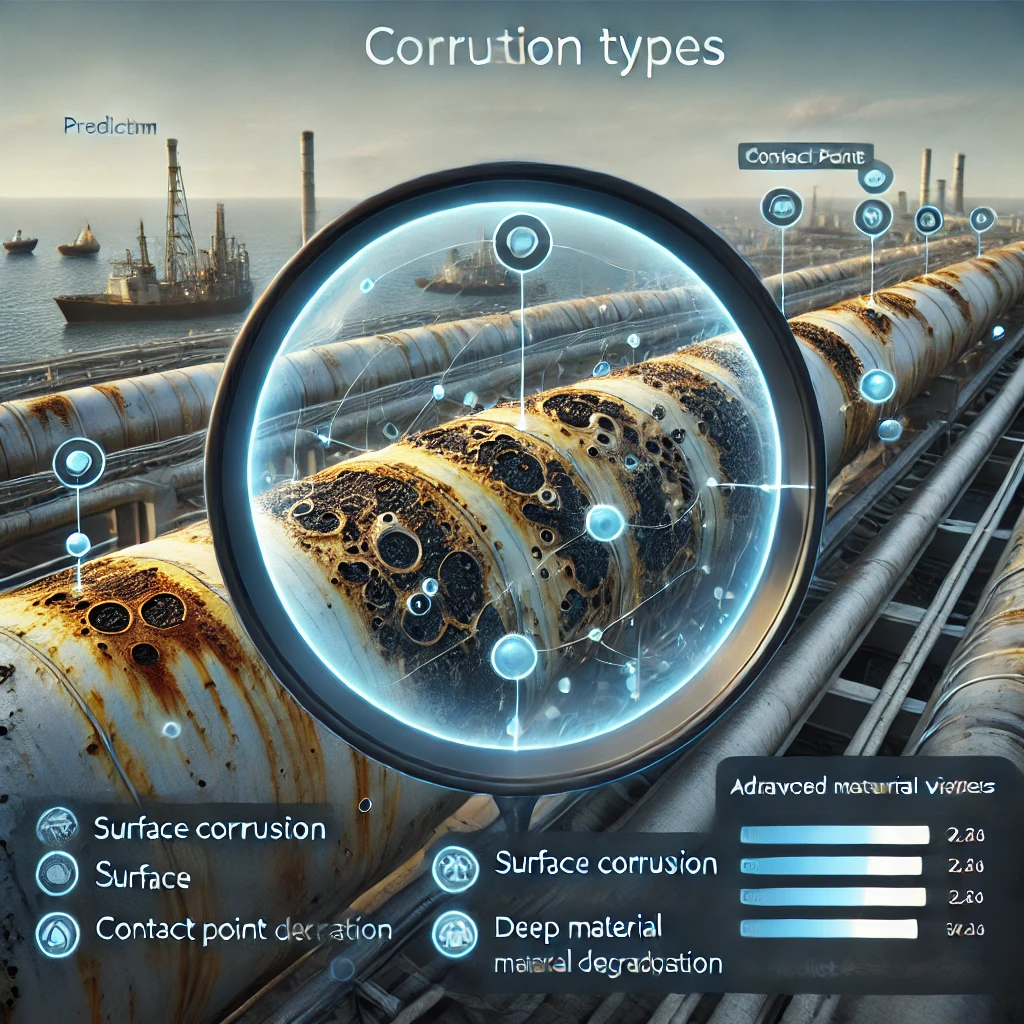Pipeline infrastructure—whether for water, gas, or oil—is subject to constant wear and tear from both environmental factors and operational stress. Corrosion, cracks, and other forms of damage can lead to catastrophic failures if left undetected. While many companies offer solutions to monitor and maintain these pipelines, Predictim Globe takes it a step further by integrating multiple advanced technologies into a cohesive, intelligent platform.
Predictim Globe doesn’t just identify corrosion and damage; it predicts it, assesses its severity, and optimizes the timing of repairs. This proactive, AI-driven approach allows pipeline operators to avoid unnecessary downtime, maximize the lifespan of critical components, and ensure safer, more reliable operations.
The Traditional Approach: Reactive and Fragmented
Many existing solutions rely on basic sensor data or visual inspections that identify damage only after it has occurred. This reactive approach can result in costly emergency repairs, service disruptions, and even safety hazards. Most pipeline monitoring systems are fragmented, focusing on either visual inspection or sensor data without a seamless integration between the two. This leaves operators with incomplete information and forces them to make decisions without fully understanding the condition of the entire system.
How Predictim Globe Stands Apart: An Integrated, Predictive Platform
Predictim Globe’s solution offers more than just monitoring; it delivers a fully integrated system that combines computer vision, machine learning, IoT sensors, and predictive analytics to provide end-to-end insights into pipeline conditions. Here’s how each component works together to create a solution that outperforms traditional methods:
Computer Vision for Deep Analysis:
- Using advanced computer vision techniques like convolutional neural networks (CNNs) and semantic segmentation, Predictim Globe analyzes images and video footage from drones, robots, and fixed cameras to detect even the most subtle signs of corrosion, cracks, and material wear.
- The system can identify complex damage patterns that would be missed by manual inspections, such as contact point corrosion, deep cracks, or worn insulation. This deep level of analysis gives operators detailed, accurate assessments of pipeline integrity, allowing for precise maintenance planning.

IoT Sensors for Continuous, Real-Time Monitoring:
- IoT sensors placed throughout the pipeline continuously collect data on environmental factors, material stress, and operational conditions like pressure and temperature. These sensors track corrosion-prone areas over time and detect early signs of material degradation before it becomes critical.
- Unlike basic monitoring systems, Predictim Globe’s IoT integration provides real-time feedback, meaning operators don’t have to wait for scheduled inspections to identify potential problems.

Predictive Maintenance Using Machine Learning:
- Predictim Globe’s platform uses machine learning algorithms to analyze historical and real-time data, allowing the system to predict when and where damage is most likely to occur. This proactive approach enables operators to schedule repairs during planned downtimes, avoiding costly emergency interventions.
- The system continuously improves its predictive accuracy by learning from each inspection and repair event. Over time, it becomes more adept at anticipating failures, ensuring that pipelines are always operating at peak efficiency.

Seamless Integration with Existing Infrastructure:
- Predictim Globe’s platform is designed to easily integrate with existing infrastructure, regardless of the size or complexity of the pipeline network. Whether monitoring a small regional water system or a vast transnational oil pipeline, the system scales effortlessly.
- The platform also connects with digital twin systems, allowing operators to visualize damage in real time and simulate various repair and maintenance scenarios. This feature helps teams make informed decisions about when and where to intervene, ensuring optimal resource allocation.

Sub-Problems Addressed by Predictim Globe
Key Benefits of Predictim Globe
- Enhanced Safety: By automating inspections in hazardous areas, Predictim Globe minimizes the need for human workers in dangerous environments.
- Cost Efficiency: The platform’s predictive capabilities ensure that repairs are made at the optimal time, reducing unnecessary interventions and costly emergency repairs.
- Scalability: Whether monitoring a small municipal pipeline or a massive oil and gas network, Predictim Globe’s platform adapts to any scale, ensuring consistent and reliable performance.
- Continuous Learning and Improvement: The system gets smarter over time, learning from every inspection and repair event to enhance future predictions.
Conclusion: More Than Just a Monitoring Tool
Predictim Globe’s AI-driven solution is more than just a tool for monitoring pipeline conditions. It is a comprehensive platform that transforms the way pipeline maintenance is approached, shifting from reactive, post-damage repairs to proactive, predictive maintenance. With its ability to analyze, predict, and optimize every aspect of pipeline health, Predictim Globe sets a new standard in the industry, providing a solution that not only detects problems but prevents them from occurring in the first place.
By delivering unprecedented accuracy, scalability, and adaptability, Predictim Globe ensures that operators can maintain safe, efficient, and cost-effective pipeline networks in an increasingly complex operational environment.





